Broccolini and cabbage planting method (Best time for planting cabbage and broccolini is September)
How to grow cabbage and broccolini in mulching cultivation. This time, we will plant broccolini and cabbage seedlings. (Broccolini and cabbage planting guide.) Broccolini and cabbage grows in which season? The best time to plant cabbage (winter cabbage plants) and broccolini is from early to mid-September. Brassica vegetables such as cabbage and broccolini are easier to grow when planted in autumn.
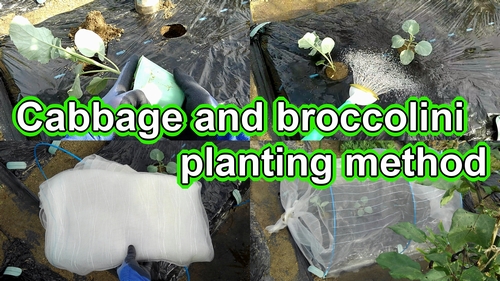
How far apart to plant cabbage (winter cabbage plants) and broccolini? The spacing between cabbage and broccolini plants is about 30cm (12 inches). Since cabbage has large outer leaves, if you have space in the cultivation area, I think a spacing of 40-50cm (16-20 inches) between plants is also fine.
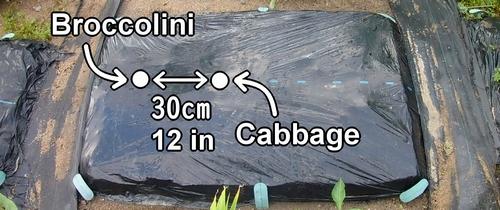
The plots for cabbage (winter cabbage plants) and broccolini were prepared with soil and fertilizer added by late August.
Broccolini and cabbage planting guide (Best way to plant cabbage and broccolini)
How to plant cabbage and broccolini? (Broccolini and cabbage planting method.) The planting process for cabbage and broccolini starts with making holes in the mulch. For making holes, we use a mulch cutter. A mulch cutter is a tool used for planting seedlings or seeds.
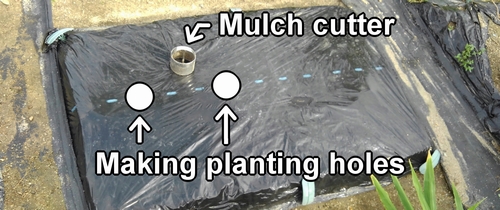
Push the cutter into the mulch sheet to create planting holes for cabbage and broccolini seedlings. Please set aside the soil from the holes.
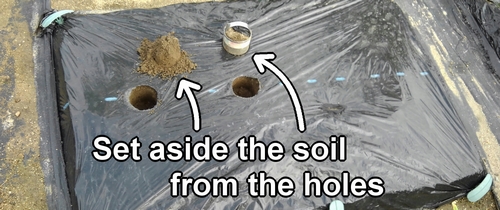
After making the holes for planting cabbage and broccolini, check the depth and size of each hole. Let’s place the potted plants into the holes. It should be easy to check once you actually place them in.
If there are any issues such as the hole being too shallow or deep, or too large or small, adjust the planting hole accordingly. Using a trowel is useful for adjusting the size of the hole.
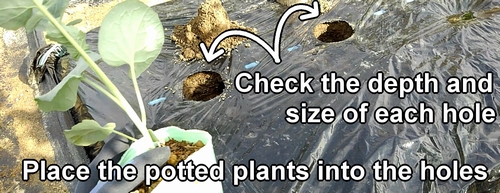
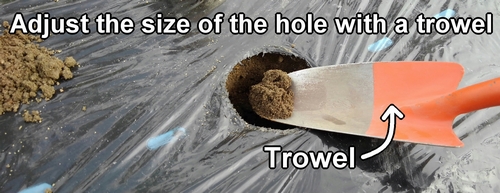
Fill the hole with water up to 80%. Cabbage and broccolini seedlings should be planted after the water has drained away.
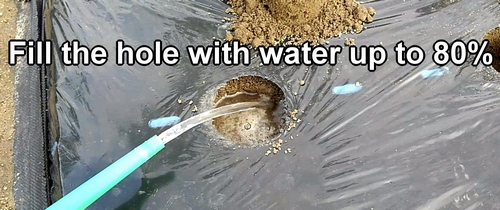
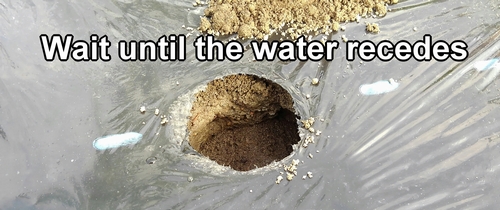
Cabbage and broccolini seedlings are delicate. Handle cabbage and broccolini seedlings gently during planting to prevent them from breaking or getting damaged. The way to plant seedlings is to first pinch the stem of the seedlings between your fingers, and turn over the pot.
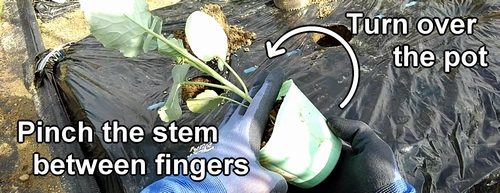
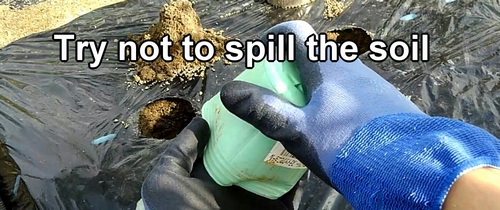
Gently remove the cabbage and broccolini seedlings from the pot and plant in the hole. Try to avoid breaking the soil around the seedlings as much as possible.
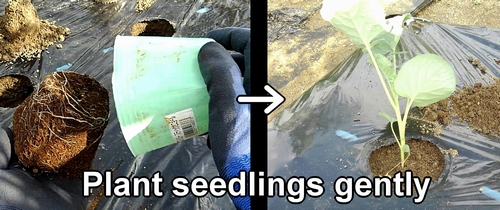
After planting the cabbage and broccolini seedlings, return the previously set aside soil and fill the gaps around the hole. Once the gaps are filled, gently press down the soil around the base of the seedlings, being careful not to damage them.
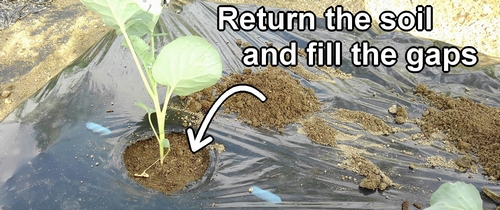
Any excess soil from planting cabbage and broccolini should be dropped beneath the bed. If the leftover soil comes into contact with the leaves, it can potentially lead to diseases. Let’s keep the surface of the mulching film clean.
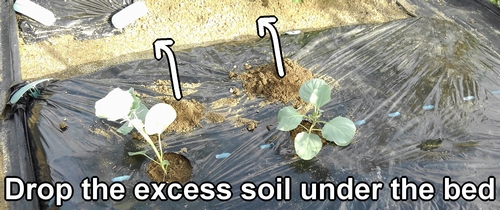
Water in newly planted cabbage and broccolini very thoroughly. (To establish the cabbage and broccolini plants in the bed.)
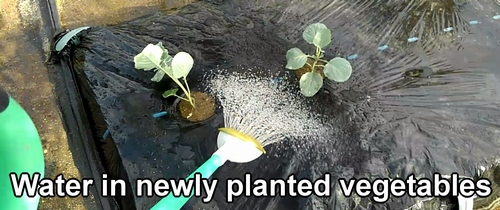
After planting cabbage and broccolini, set up insect netting for protection (Broccolini and cabbage planting tips)
After planting cabbage and broccolini seedlings, erect support poles and install insect netting to prevent insects from infesting the vegetables.
Cabbage and broccolini belonging to the Brassica family, are prone to pests, so it’s reassuring to use grow tunnel at the time of planting.
For grow tunnel, we use flexible support poles. To cover the entire bed, prepare a large insect netting. The bed is approximately 60×120cm (2×4 feet) in size. The insect netting is used by placing it over the poles, so you’ll need a width of about 180cm (6 feet) and a length of around 3 meters (9 feet).
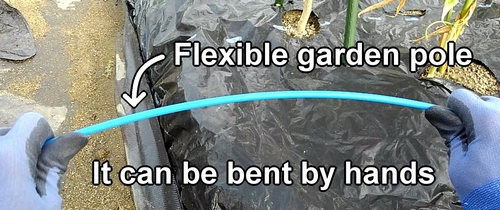
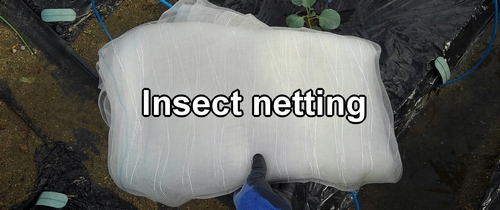
Insert the flexible poles diagonally toward the inside of the bed and set up 3 of them at equal intervals.
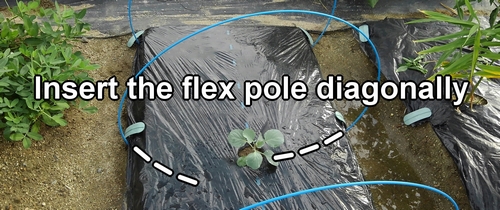
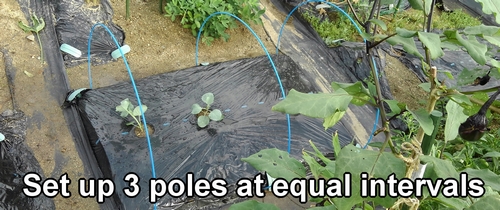
Cover the net over the poles. The edge of the insect netting is tied with knot, and U-shaped garden pin is hooked onto this knot. The garden pin is then inserted into the ground to secure it. Please be careful not to insert the pin directly into the insect netting as it may cause holes.
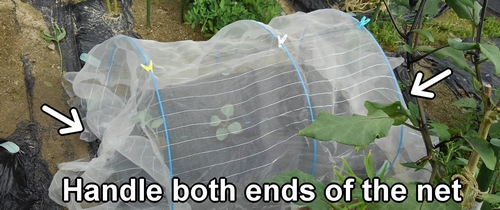
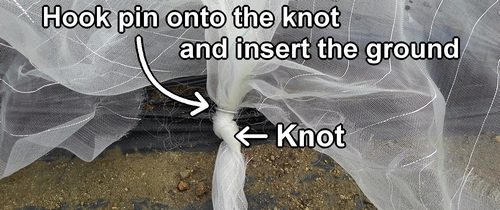
The insect netting on the side of the flexible poles is secured with a tunnel clips. The tunnel clips are fitted onto the flexible poles, sandwiching the insect netting in between. The tunnel clip is used with the projection part facing downwards. (Embed the projection part slightly into the ground.)
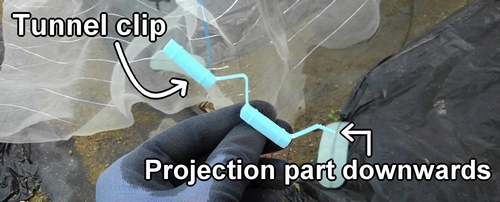
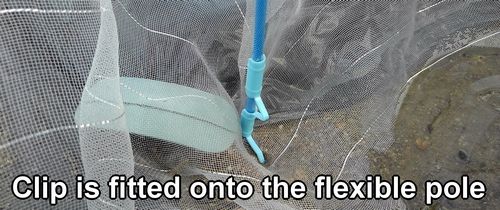
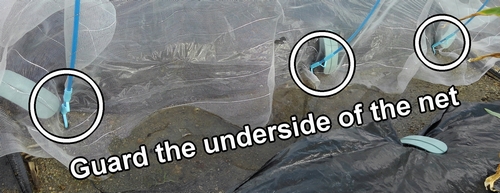
Tie and gather any excess of the insect netting.
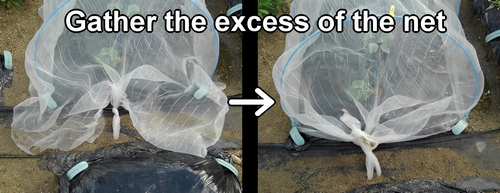
Secure the insect netting with clothespins. With this, the planting of cabbage (winter cabbage plants) and broccolini seedlings and the installation of the insect netting are complete.
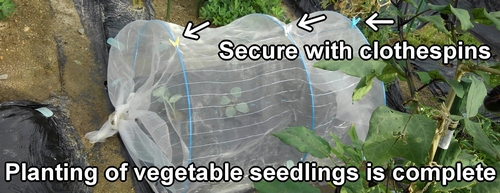
Related information on cabbage cultivation(Frequently Asked Questions for growing cabbages)
What fertilizer is good for feeding cabbage? (What is the best fertilizer to use for side dressing cabbages?)
For side dressing for cabbages, chicken manure is recommended. Chicken manure contains important nutrients like nitrogen, phosphorus, and potassium that are needed for cabbage cultivation. A good amount to use is about 40g (1.4 oz) of chicken manure per cabbage plant.
Following is the video for how-to. English subtitles are available.
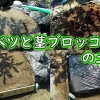

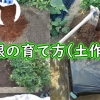

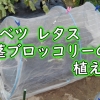
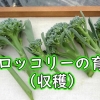

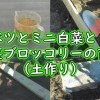




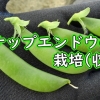

Discussion
New Comments
No comments yet. Be the first one!